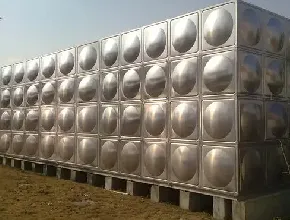loading...
- No. 9, Xingyuan South Street, Dongwaihuan Road, Zaoqiang County, Hengshui, Hebei, China
- admin@zjcomposites.com
- +86 15097380338
- Welcome to visit our website!
Exploring the Benefits and Applications of FRP Bars in Construction Engineering
The Role of FRP Bars in Modern Construction
Fiber-Reinforced Polymer (FRP) bars have emerged as a revolutionary alternative to traditional concrete reinforcement methods. With the growing emphasis on sustainability and durability in construction, FRP bars are becoming increasingly popular in various structural applications.
.
Another advantage of FRP bars is their lightweight nature. Weighing significantly less than steel, these bars are easier to transport and handle on-site, resulting in lower labor costs and quicker installation times. Additionally, the lower weight of FRP bars contributes to reduced overall structural weight, allowing for more efficient design and potentially lowering foundation costs.
frp bar

FRP bars also provide high tensile strength, making them effective for applications where traditional reinforcement may fail. Their flexibility in terms of design allows engineers and architects to create more innovative and creative structures. Furthermore, FRP bars can be manufactured in various shapes and sizes, making them adaptable to a wide range of construction needs.
Sustainability is another critical factor contributing to the popularity of FRP bars. As construction industries worldwide strive to reduce their carbon footprint and promote environmentally friendly practices, the use of sustainable materials is becoming increasingly essential. FRP bars can be produced using recycled fibers and have the potential for a longer service life, aligning perfectly with green construction initiatives.
Despite these advantages, there are still challenges to overcome in the widespread adoption of FRP bars. Issues such as cost—FRP materials can be more expensive than steel—may deter some builders from making the switch. Furthermore, the performance of FRP bars under high temperatures and their long-term behavior in specific environments are areas that require ongoing research and monitoring.
In conclusion, Fiber-Reinforced Polymer bars represent a transformative advancement in construction technology. Their unique properties, including corrosion resistance, lightweight design, and sustainability benefits, position them as a viable option for modern infrastructure projects. As technology continues to evolve and production processes become more efficient, it is likely that FRP bars will play an increasingly significant role in shaping the future of construction.
-
The Rise of FRP Profiles: Strong, Lightweight, and Built to LastNewsJul.14,2025
-
SMC Panel Tanks: A Modern Water Storage Solution for All EnvironmentsNewsJul.14,2025
-
GRP Grating: A Modern Solution for Safe and Durable Access SystemsNewsJul.14,2025
-
Galvanized Steel Water Tanks: Durable, Reliable, and Ready for UseNewsJul.14,2025
-
FRP Mini Mesh Grating: The Safer, Smarter Flooring SolutionNewsJul.14,2025
-
Exploring FRP Vessels: Durable Solutions for Modern Fluid HandlingNewsJul.14,2025
-
GRP Structures: The Future of Lightweight, High-Performance EngineeringNewsJun.20,2025
